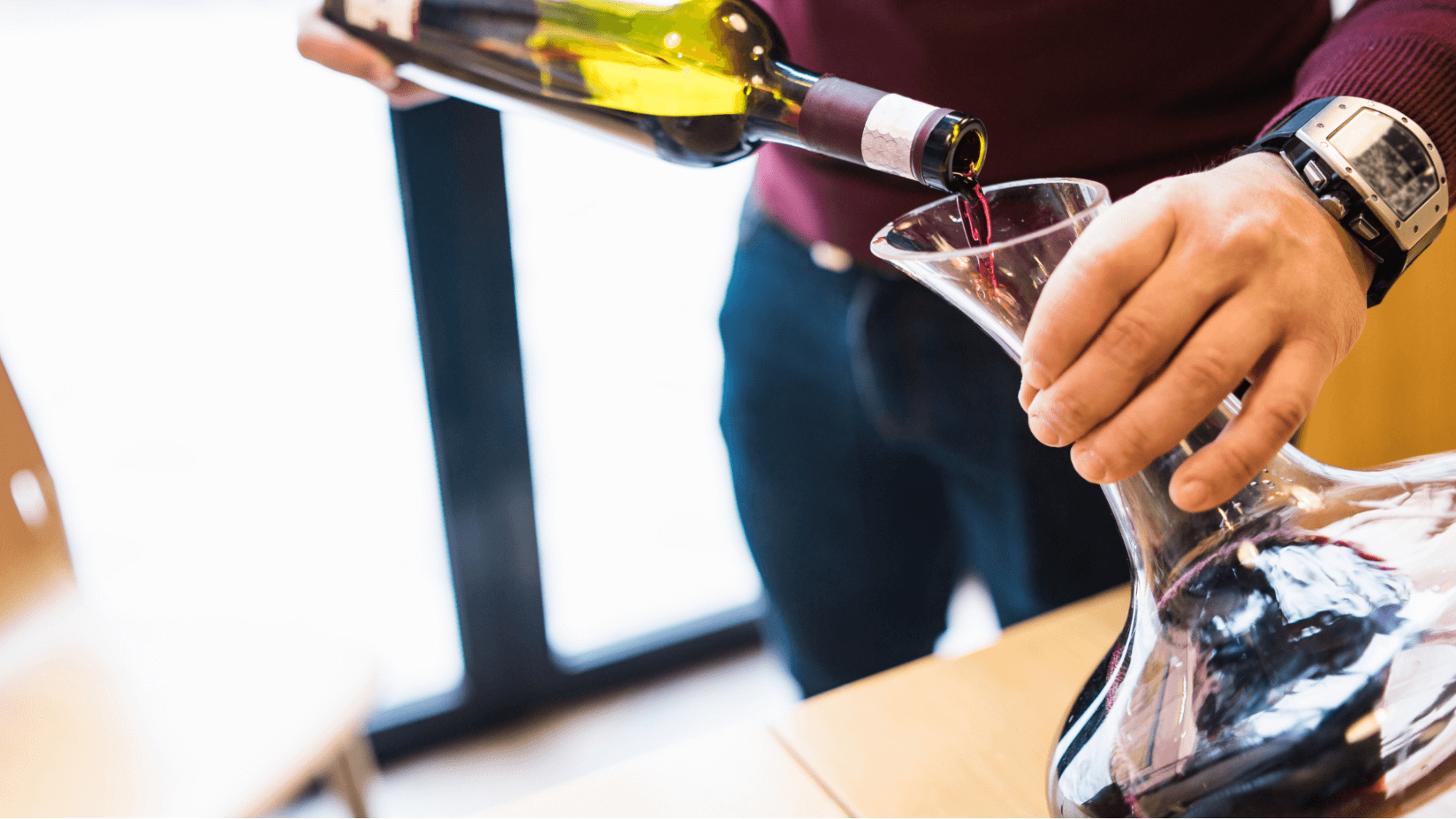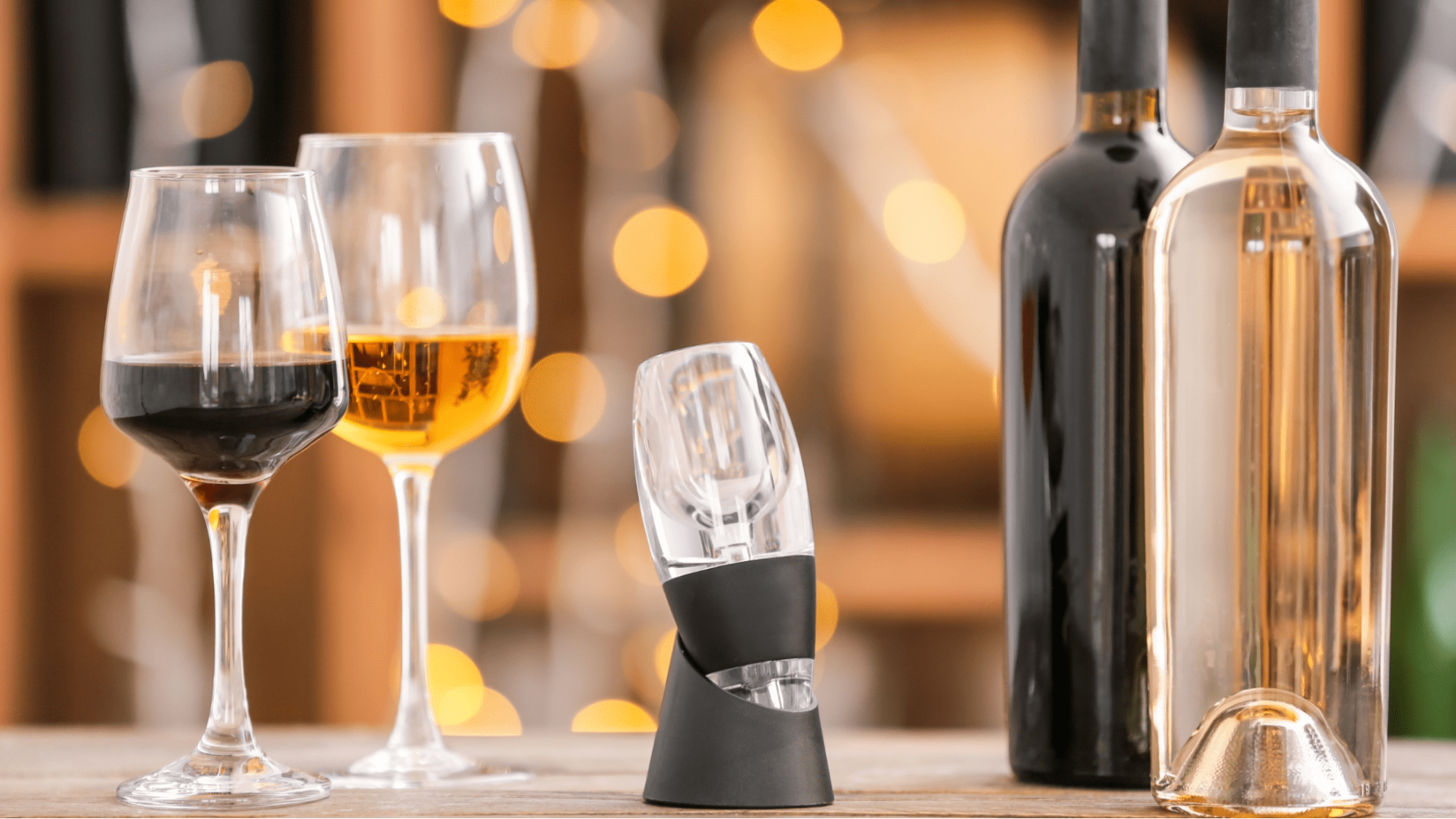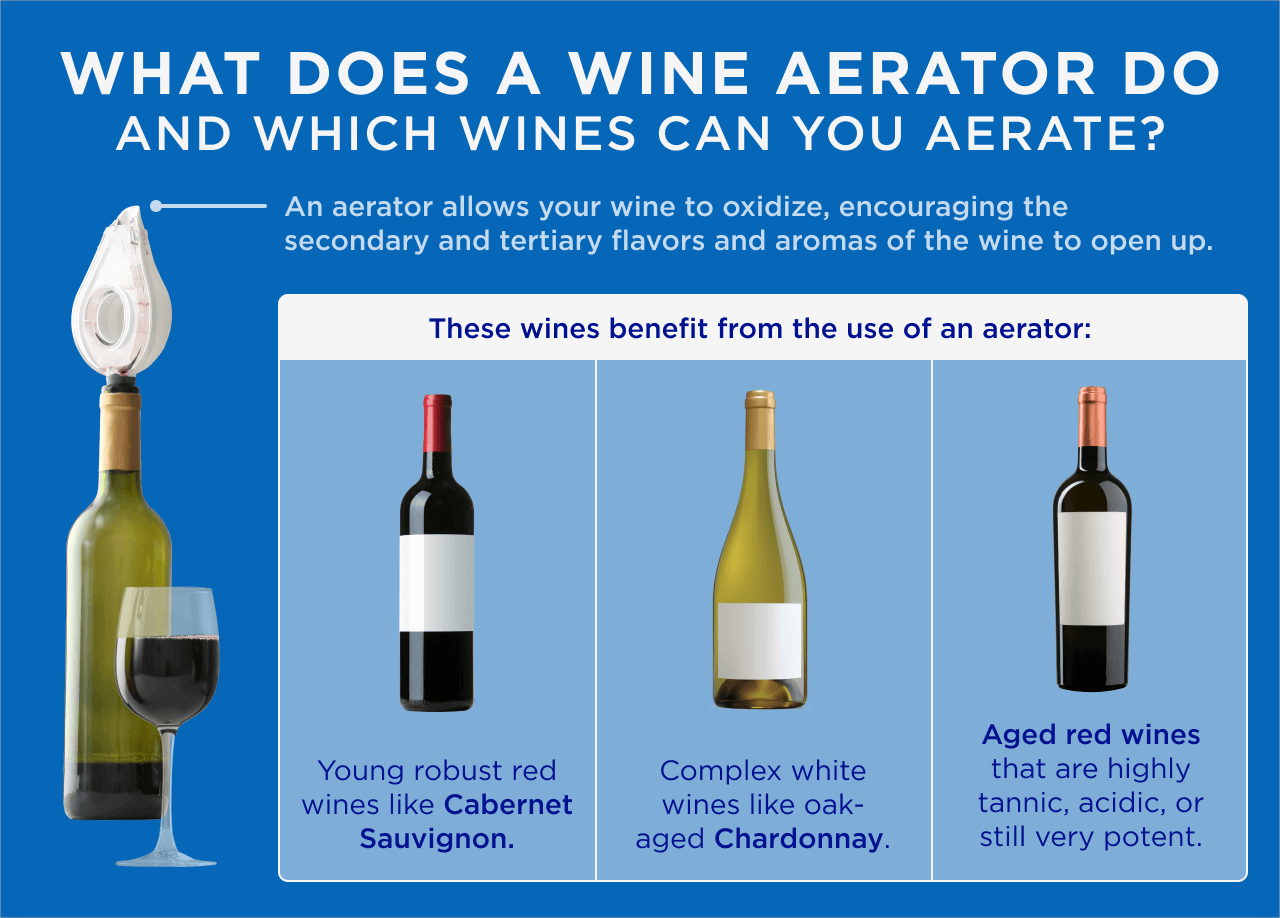What Does a Wine Aerator Do?
For a wine to look and smell its best, it may need some time to “breathe.” This can be accomplished by using a decanter, giving your wine a swirl in the glass, or using an aerator. But what does a wine aerator do, and how does it benefit the wine?
Today, we’re exploring all things wine aeration to help your wine taste the best it possibly can.
What is a Wine Aerator?
Unlike a wine decanter, which is a larger, vase-shaped glass, an aerator is usually a much smaller, spout-like device that attaches to the mouth of a bottle of wine. There are also hand-held aerators, which are held over the glass as you pour.
Both items allow your wine to oxidize, encouraging the secondary and tertiary flavors and aromas of the wine to open up like a lovely bouquet.
Let’s explore exactly how these two devices work differently to accomplish the same goal.
Aerator vs. Decanter
When you pour a wine from the bottle, its surface area expands, allowing more oxygen in.
This is where the term letting your wine “breathe” comes from, as oxygen creates a chemical reaction, encouraging a diverse expression of the existing aromas and flavors.
For example, when serving a red wine with blackberry, cherry, and currant notes, like Cabernet Sauvignon, aeration could help to make the flavor profile bolder and more pronounced.
Let’s see how aerators and decanters treat wine differently.
Aerator
When using an aerator, two chemical reactions occur: oxidation and evaporation. This doesn’t mean your wine will begin evaporating from its glass. Instead, undesirable compounds like sulfites and crystals evaporate, leaving only the desirable aromas behind.
Unlike a decanter, which allows the wine to sit and oxidize on its own, an aerator uses rapid aeration to receive the same effect instantly. Aeration happens as you pour, while decanting takes place after you pour.
In general, aerators are best for young, tannic red wines, as aeration will smooth the tannins without breaking the wine down.
Wine Decanter
While both devices allow more oxygen into the surface area of the wine, decanters are mainly used for oxidizing older wines, white wines, and Rosé. Since a wine aerator creates rapid aeration, it’s too harsh for delicate wines. Even lighter young red wines like Pinot Noir might be better off in a decanter.
A decanter allows a wine to sit in a small or large crystal or glass space, letting it develop naturally at its own pace.
Decanting is best if your wine contains sediment, as the wide base lets these unwanted particles collect at the bottom, leaving the surface of your wine free for pouring.
Unfortunately for aerators, sediment can sometimes get caught inside and clog during the process, so it's wise to let decanters handle these wines.

When Can You Aerate White Wine?
Aerators are best for full-bodied young red wines, although sometimes a robust red wine that’s been aged can handle aeration depending on its potency.
There are, however, times when a white wine can be aerated if it is robust enough. Full-bodied buttery and complex chardonnays, Bordeaux white wine, Alsace white wine, and Burgundy white wine may fare better with aeration than a decanter.
Their flavor profiles may be too heavy to open up from decanting alone.
Now that we know how aerators and decanters work and the types of wine for each, let’s examine how exactly to use an aerator for your wine.

How to Use an Aerator Wine Pourer
There are three main types of aerators: the pourers that snap into place, handheld aerators that you hold over the glass while pouring through, and aerator pumps that pull the wine out of the mouth of the bottle and into the glass.
Regarding material, aerators are usually made out of stainless steel or glass.
Regardless of which type you use, here’s how to aerate properly in just five easy steps:
-
1. Uncork your wine bottle on a stable surface.
-
2. If using a handheld aerator, hold it steady over the glass. If using an aerator pourer (spout), push it into the wine bottle. It should snap into place.
-
3. Slowly pour the wine into the glass (it may run faster as it aerates).
-
4. Remove the aerator and re-cork the bottle.
-
5. Swirl your wine in the glass, inhale the aromas, and enjoy a delightful sip.
Your wine is now fully aerated and ready for sipping! But since aeration is instant, if you choose to decant your wine instead, it’s essential to know how long to let it sit.
How Long Should You Decant Wine?
Since decanters benefit from several different types of wine, it’s essential to know how long each should be allowed to decant. Timing is everything, as the right amount of time will bring the aromas and flavors to their fullest:
-
Full-bodied red wines can decant for as little as twenty minutes or up to two hours, although a half hour to an hour is perfect for most.
-
Light-bodied reds like Pinot Noir will decant for about twenty minutes to a half hour.
-
Aged and tannic red wines may benefit from longer decanting as they need maximum breathing time due to their potency.
-
For most white wines and Rosé, thirty minutes or slightly less is best, while sparkling wine doesn’t need to be decanted at all. Instead, set your bubbly in the fridge for up to a half hour before serving.

Should You Use an Aerator for Your Wine?
Whether you use an aerator or decanter depends on the type of wine and your goals. Aeration can help many wines taste and smell their best instantly instead of waiting an hour or two.
This is especially helpful if you have a last-minute dinner party or guests on short notice or want to enjoy an impromptu glass after a long day.
If you’d like to enrich your wine knowledge further, check out our Podcast and Wine Online 101 for everything related to the world of wine.
As a leader in the alcohol e-commerce wine industry, we can’t wait to share our expert knowledge with you.
